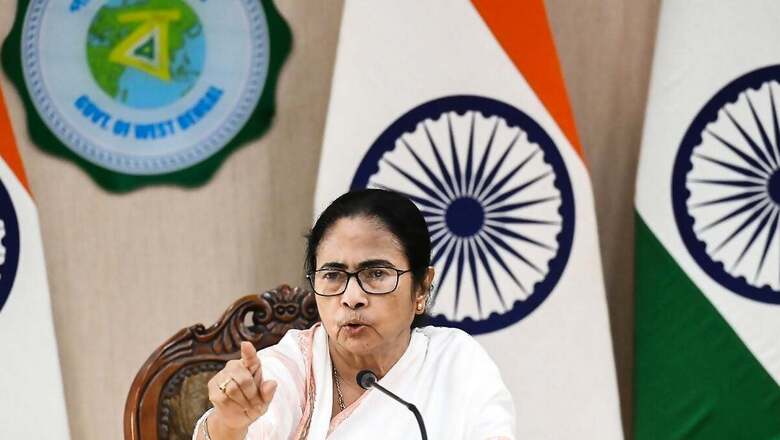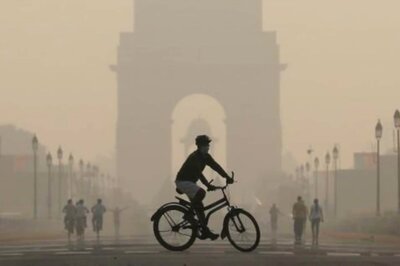
views
The Mamata Banerjee government in West Bengal has sought to draw a line under the gruesome rape and murder of a young doctor at the state-run RG Kar Hospital by speedily apprehending the alleged perpetrator, before the protests about safety in hospitals gains momentum. He has conveniently confessed to the heinous crime and the Chief Minister has appropriated the role of the judiciary too and promised a fast track court’s guilty verdict and even hanging, “if need be”!
Even the CM’s nephew jumped into the fray with the incredible proposal that rapists should be simply killed in encounters, an inept ploy to co-opt the anger of the protesting doctors of RG Kar hospital, no doubt. Before that, he even sought to posit the discovery of the doctor’s battered body in the hospital as a plus point for West Bengal because, he averred, it would never have been found at all in UP. With his aunt as both health and home minister, all is now well, it seems.
But things are never as simple as a government would like to posit. If indeed the perp, Sanjoy Roy, was not even an employee, how did he have free run of the hospital, including access to the place where the doctors took naps while on duty? Supposedly a former cook who left some years ago and recently returned to hang around the hospital as a “civic volunteer” without anyone challenging him proves that the term is a euphemism for a tout—that too, with political connections.
Kolkata Police does not understand how silly it sounded, proudly reeling off how the crime was solved, including how they zeroed in on Roy when CCTV footage showed him entering the hospital with ear-phones but exiting without them. Elementary, my dear What-Sen, but why was a random man allowed to loiter about the premises all the time? After all, the crime was committed pre-dawn, when the tired young woman doctor working on a long shift was taking a nap.
Why did that woman doctor have to sleep on a makeshift bed in a seminar hall instead of a proper duty room bunk? Is it not standard procedure for hospitals to provide rooms for doctors to rest, especially female ones? The protests of her fellow doctors after this crime indicates there are probably no such rooms there, not enough of them or junior doctors cannot access such facilities. But touts—and Roy by no means is the only such ‘volunteer’—can go anywhere.
The questions do not stop there. What is the point of having CCTV cameras installed in the huge hospital if staff are not monitoring the visual feed all the time to ensure criminals do not gain entry or lurk around trying to steal equipment, medicines, patients’ possessions or even newborn babies? Are the cameras and screens just there for cosmetic value? Or were those meant to be monitoring the feeds at RG Kar never at their posts? Is it the same in other hospitals?
Even more ominously, this Roy was an accepted interloper at odd hours and hence the security staff did not prevent him from entered areas of the hospital that he had no business being in, that too well after visiting hours were over. It is now clear that the “civic volunteer” had standing orders from “upstairs” never to be denied entry, arising from his proximity to the local police officials. In fact, his family and neighbours thought he was in the police himself, and his sister too.
That Roy was a regular at the hospital raises the possibility that he knew the young doctor; perhaps he even stalked her and/or had interacted with her in some way. The grievous nature of the injuries on her body listed in the post-mortem report released by the police, seem to indicate that the rapist-murderer’s violent act was personal, almost vengeful. Since he has been remarkably forthcoming about his black deed, he may also provide information on this matter too.
Consistent hiring of “civic volunteers” by the police instead of regular recruits has long been an unreported controversy in West Bengal. They are paid a pittance but supplement it by other means. Police stations now not only rely on them for information but let them “handle” local disputes too, making them neighbourhood enforcers. They all have political affiliations, so they are “effective” enforcers, but remain outside any disciplinary purview, unlike regular police staff.
That Roy was regarded as a goon in his locality begs the question of why he was patronised by the cops for so long, and why his neighbours’ evident fear of him was ignored. That he supposedly watched pornography on his mobile phone is another diversionary tactic by the police to mask complicity. The confidence with which Roy entered the hospital at 3am and headed for the seminar room shows he was confident of not being caught or, at the very least, getting off lightly.
Some may remember the case of Aruna Shanbaug, the nurse who was raped, strangled with a dog leash and left to die by a ward boy whom she had scolded, in Mumbai’s King Edward’s Memorial Hospital in 1973. Aruna survived, in a manner of speaking, for she remained in a coma for 43 years, tended lovingly by her colleagues even as a journalist campaigned for euthanasia. She finally passed away on her own. Her rapist got away with serving just seven years in jail.
The chances of the same thing happening in the current case cannot be ruled out. The wheels of “justice” grind slowly in India and Roy may simply be forgotten, along with the doctor whose life and promising career he allegedly cut short. The word “allegedly” is used advisedly here as the speed with which Kolkata Police caught the perp and closed the case belied their usual sloth. The pressing political need to tie it up neatly before the junior doctors got too restive is evident.
The murdered doctor’s angry colleagues have not only been demanding justice for her but also drawing attention to the abysmal state of security and safety in that hospital. And it is very likely that the same situation prevails in all state-run hospitals in the city—if not all over West Bengal. That is what the CM should be showing willingness to tackle: lawlessness sanctioned and enjoyed by those with political links. Promising the hanging of Sanjay Roy is a mere deflection.
Logically, very strict security protocols should have been put in place for all hospitals around the country after Shanbaug’s ordeal—especially as she remained on the media radar for decades, a grim reminder of the lack of safety measures for female medical staff. But sadly, every state still has cases like what happened at RG Kar Hospital in Kolkata this week. Most state-run hospitals do not appear to have done the needful; private ones seem far more careful on this count.
Opposition parties in West Bengal have called for the resignation of whoever they have felt like: the police chief, the investigators, the CMO (chief medical officer) of RG Kar Hospital and even the CM. But that again deflects from the issue of the safety and security of medical staff—and indeed patients and their attendants, who are equally vulnerable to criminal acts. But no amount of chief ministerial rants against the alleged perp can excuse the state government’s laxness either.
The author is a freelance writer. Views expressed in the above piece are personal and solely those of the author. They do not necessarily reflect News18’s views.




















Comments
0 comment